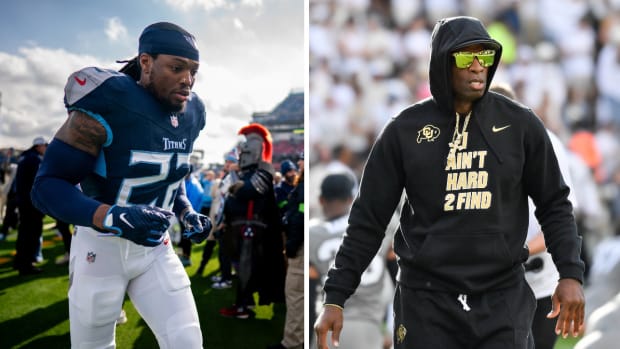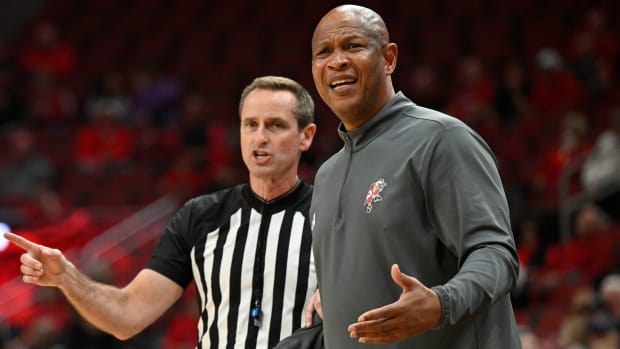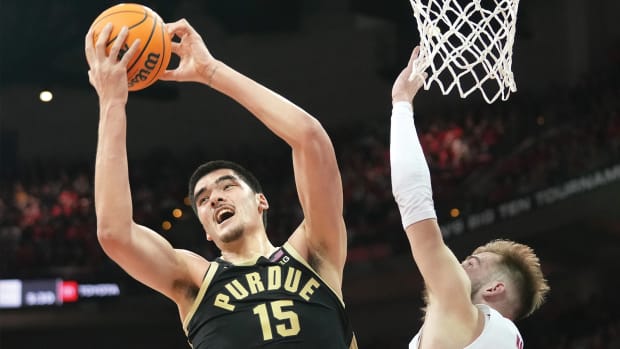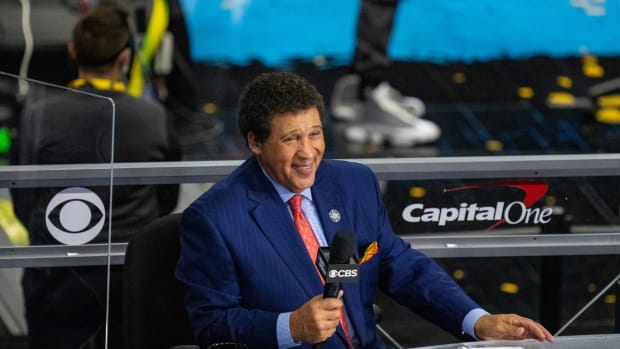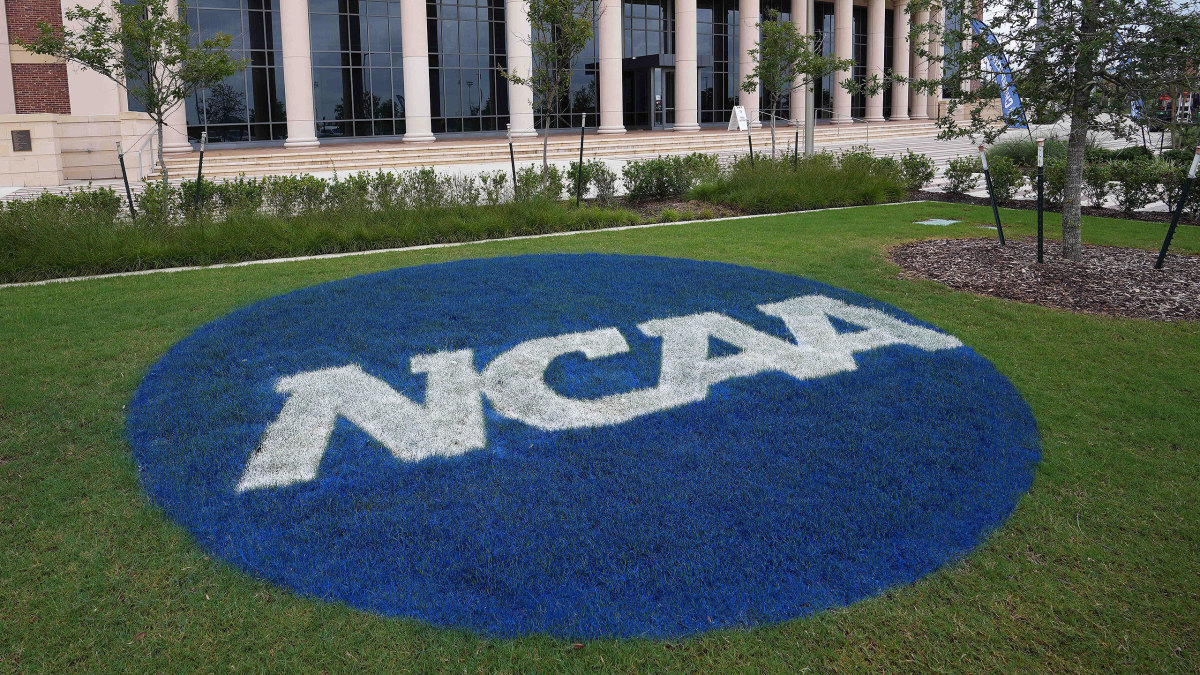
The Next Frontier in College Sports: The Unionization of College Athletes
Last spring, Michael LeRoy called his shot.
LeRoy, a law professor at Illinois who has published extensive work on labor policy, believed that the NCAA’s foray into NIL was an evolutionary step to an employment relationship between schools and athletes.
“The Pandora’s Box,” he said then, “has been opened.”
Roughly 18 months later, here we are. Athletes are closer than ever to becoming employees of their universities thanks to a memo released Wednesday from the National Labor Relations Board (NLRB). NLRB general counsel Jennifer Abruzzo has deemed that some college athletes are employees under the National Labor Relations Act. And while her memo is only a guide to the NLRB’s field offices, it is a thundering message: The agency’s lead lawyer is inviting athletes from private colleges to bring forth a petition to unionize as employees.
But will they do it?
“I do think it’ll happen,” LeRoy says. “I’d anticipate it happening in the next year and probably sooner.”
Legal experts and athletic administrators spoke to Sports Illustrated on Wednesday about what could eventually be a game-changing advisory from the National Labor Relations Board (NLRB), the independent agency that enforces U.S. labor law as it relates to collective bargaining. Six years after the same board denied Northwestern football players the right to unionize as employees, Abruzzo, a presidential appointee, opened the door to a more friendly approach.
In light of the Supreme Court’s ruling in the Alston case and the implementation of NIL, she believes that college athletes are employees, should be treated as employees and should be afforded the rights of employees, which includes unionization, collective bargaining and not being described as “student-athlete,” she wrote in her advisory.
It’s yet another ripple in this choppy ocean of change that is college athletics, one that many have speculated for years was coming. In fact, just last week during a conference of athletic directors in Washington D.C., Notre Dame athletic director Jack Swarbrick predicted this chapter.
“Sometime in this school year, somewhere in the legal world, or administrative level,” he told them, “a student-athlete will be declared an employee.”
It’s no longer speculative.
The memo’s release was interestingly timed and maybe not so coincidental. It dropped a day before a House subcommittee holds a hearing on NIL.
The memo is the latest dramatic splash in this era of change in college sports. While its true impacts are unknown and likely far off, Wednesday’s news elicited a range of reactions from those both inside college sports and from the legal field.
Panic. Fear. Exhaustion. And aggression.
Some administrators believe the solution lies in the nation’s capital, where a Congressional bill could lay a legal path for schools to provide athletes collective bargaining rights and even revenue sharing provisions. Others suggest that, maybe, higher education and college athletics are headed for divorce.
“Everybody wants college football and basketball to be part of higher education,” says one administrator. “I don’t know if we can sustain it.”
Mit Winter, a sports attorney based in Kansas City and himself a former college basketball player at William & Mary, believes the future of college sports could possibly be separate from their own schools.
“I don’t know if universities and conferences and the NCAA want to participate in a system where they are collectively bargaining with the athletes. It remains to be seen,” he says. “There are different models that have been kicked around where athletic teams are spun off from the school and are their own standalone entities.”
Deeming college athletes as employees would have wide ranging impacts on both the athletes themselves and their universities. Athletes would be rudely welcomed to the world of federal taxation. And they may even be at risk of termination by their new employer, the school.
Schools could lose their Section 501(3)c designation, which impacts taxation on bond financing and charitable gifts. Student fees and public support? Those might disappear too, experts say.
It is a complex issue. Like a freight train, says one athletic director, it is bearing down on college sports, grouped with other changes that are quickly altering the landscape of the industry—for better, some say; for worse, say others.
“In the big picture, this advisory adds another pressure point for change,” says Amy Perko, the executive director of the Knight Commission. “College sports leaders know that change is coming. The question now is do they want to keep NLRB out, state and federal lawmakers out, and the courts out by creating bold changes so that the leaders of college sports are designing its future.”
The NLRB’s memo is the latest impact from the NCAA’s crushing Supreme Court defeat in the Alston case. The ruling triggered the NCAA to scrap its plan to govern NIL and has sent the organization into a fall of change. By January, the association plans to rewrite its constitution to grant more authority to conferences and schools. More than two dozen members of a constitution committee are scheduled to hold their first in-person meeting Friday in Chicago.
All of this comes amid negotiations among conference commissioners to expand the College Football Playoff, something with which Perko takes exception.
“It’s interesting that this advisory is happening while CFP expansion talks continue,” she says. “CFP expansion talks are continuing when the same leaders have not figured out a way to address the broken financial system that has led to this point. From our standpoint, we would encourage the FBS leaders, in particular, to address the structural challenges in the manner in which they are addressing CFP expansion.”
Perko’s group has crafted a governance structure in which the sport of FBS football leaves the NCAA and governs itself. The Knight Commission also has suggested that conferences direct how their schools spend revenue, mandating it be spent more on athlete support rather than coaching salaries and gaudy facilities. It is a better option than college athletes being deemed employees, she says.
But there’s a long way to go before the latter happens, says Gregg Clifton, an experienced sports and labor law attorney based in Arizona. First off, public schools, and thus public school athletes, are currently exempt from the jurisdiction of the National Labor Relations Act (NLRA). Public universities are not subject to the jurisdiction of the NLRB but rather, operate under the jurisdiction of state labor laws.
“By issuing this memorandum, the NLRB general counsel is hoping to encourage athletes at private universities to take advantage of her recommendations," Clifton says. "She is advocating that athletes go to the Labor Board and seek formal acknowledgement through a potential litigation process and establish their status as employees under the NLRA.”
In order to seek unionization, an athlete would need to gain a minimum of signatures from at least 30% of his or her team on authorization cards and file a petition with the Labor Board to begin the unionization process. A university could challenge the move on a number of grounds.
If the Labor Board approves the athletes petition, the Labor Board would then schedule and conduct an election, needing only a simple majority of those athletes to vote in favor of being unionized to create a union of athletes. The Labor Board then must certify the election results—something that never occurred in 2015 in the case of the Northwestern football players because the Labor Board embargoed the ballots cast and never formally counted the votes cast for or against unionization.
However, things have changed.
“The climate is different now,” says Tom McMillen, the president of Lead1, a group representing the FBS athletic directors.
If successful at one school, unionization will invariably spread across the country with other private school athletes following suit. State legislators are likely to get involved too, fearing their public school athletes are at a disadvantage. Already, New York and Maryland have collective bargaining bills introduced in their state legislatures.
“It’s going to create more activity at the state level just like NIL did,” McMillen says. “What if New York passes a bill and Syracuse could pay its basketball and football players? What would Alabama do?”
Winter says athletes right now could begin organizing, by team or school or conference, to make demands about working conditions if their regional labor board approves unionization. They don’t like their meals on campus? They don’t like the way in which their program travels to games? They don’t like their coach’s practice schedule? Under the National Labor Relations Act, they would have the right to voice such complaints—even go on strike—while under protection of the law from their company, in this case the university.
“Student athletes sense their moment has arrived,” says LeRoy. “The ball is now in their court.”
More College Football Coverage:
• College Football Playoff Expansion Is in Peril
• Group of ACC Athletes Urge Congress to Pass National NIL Law
• The Alliance Could Feature Season-Long Matchups, Commissioners Say
• Sources: Oversight Committee Recommends Expansion of 2022 Signing Class
